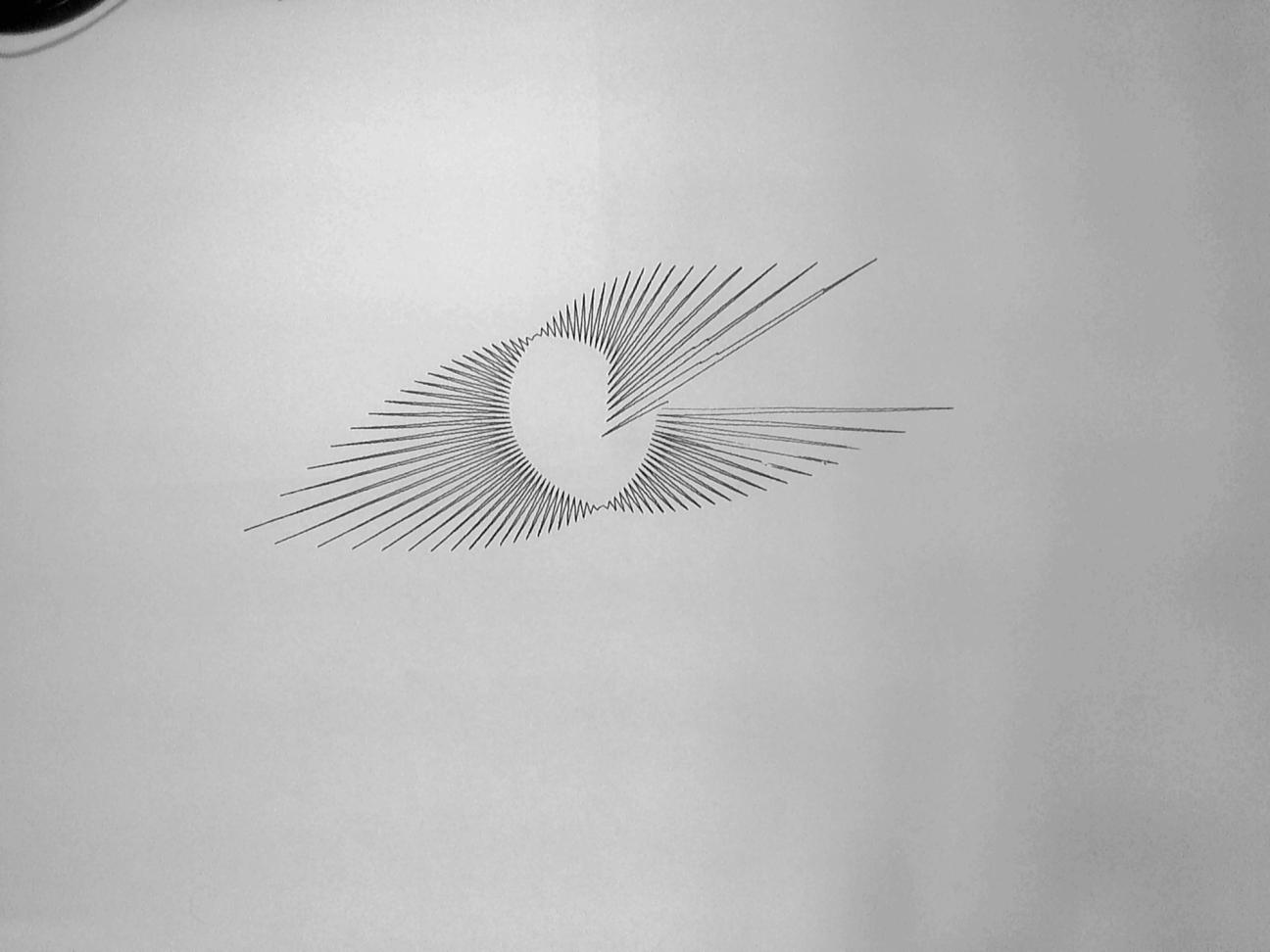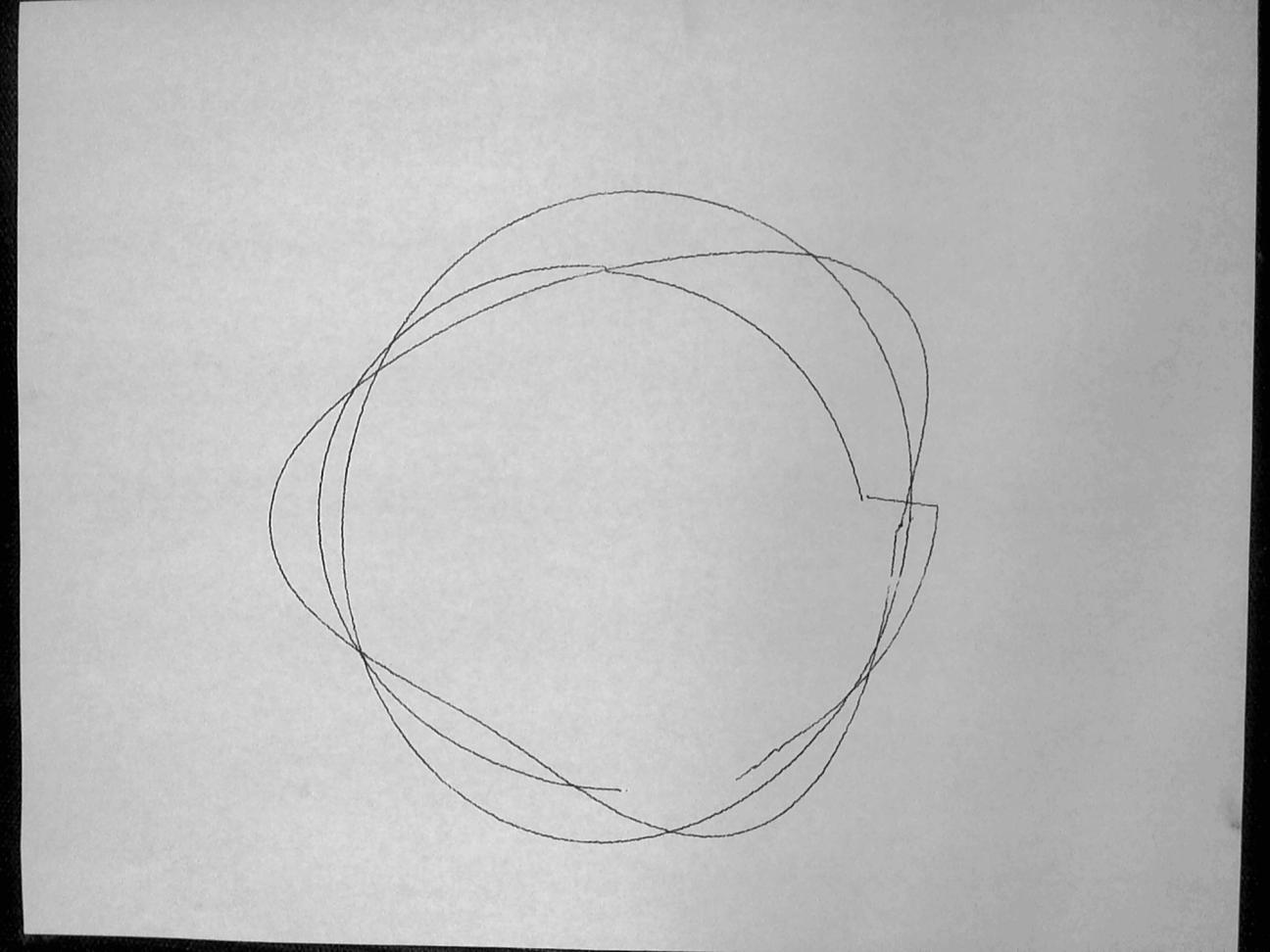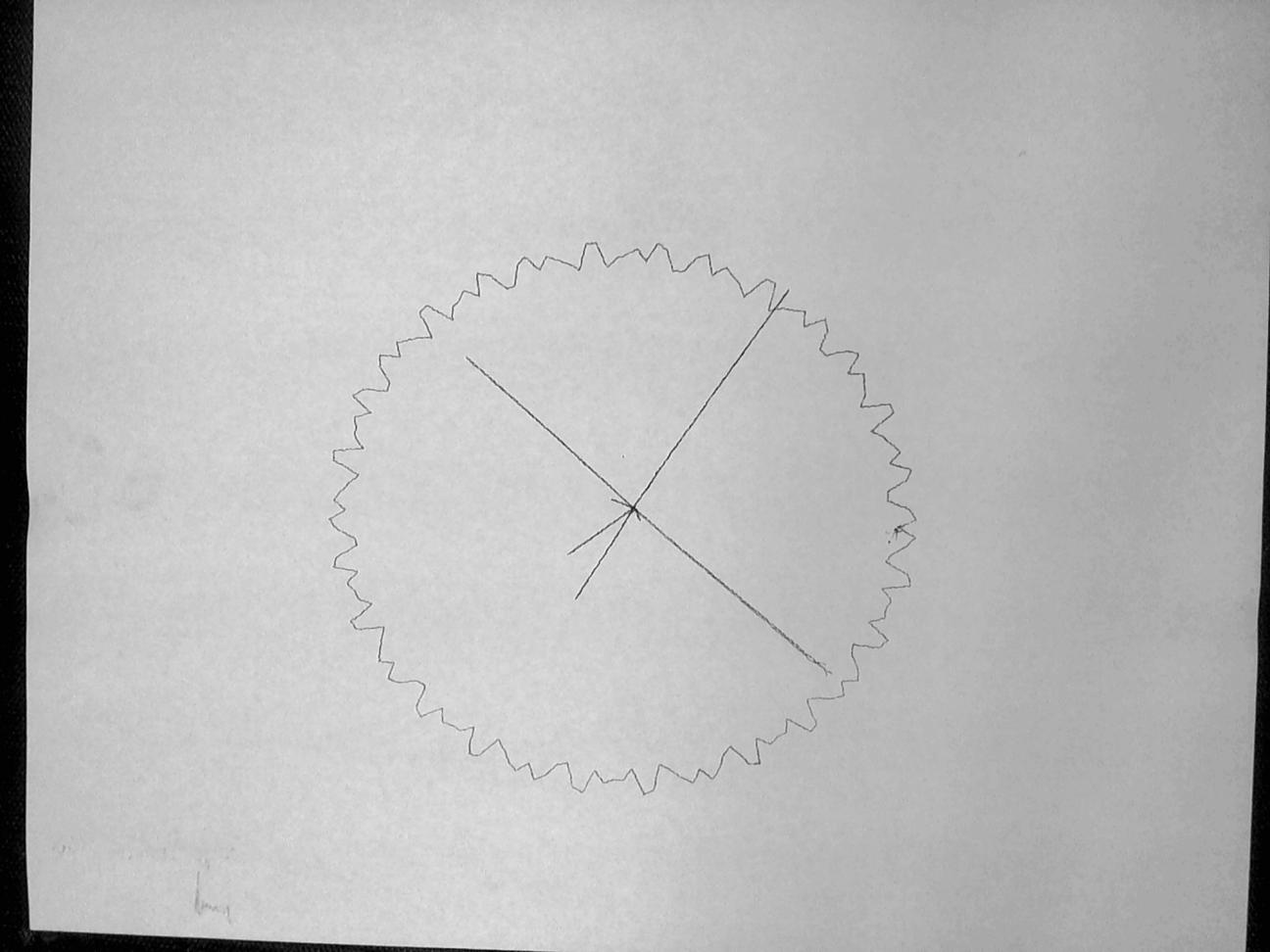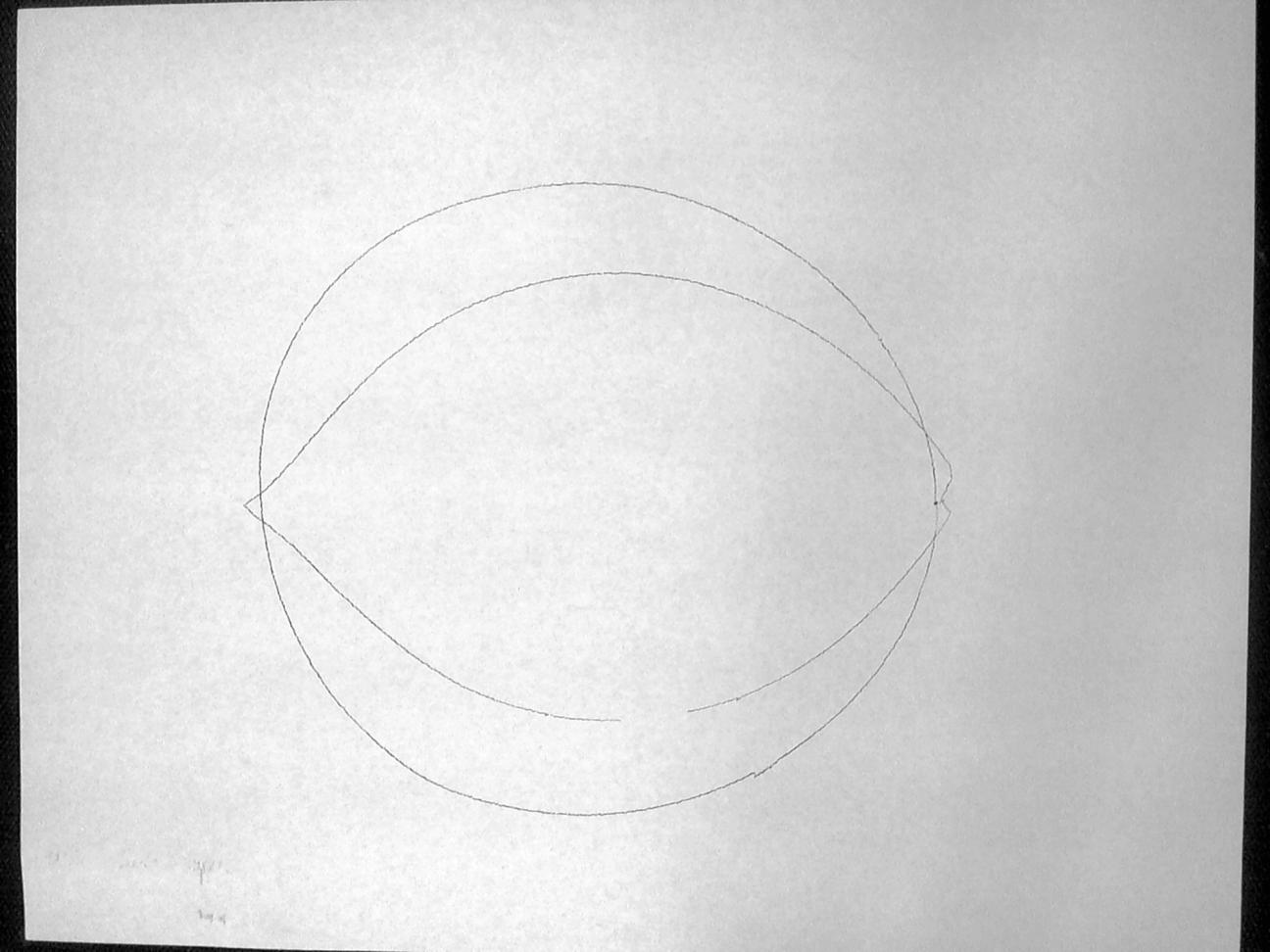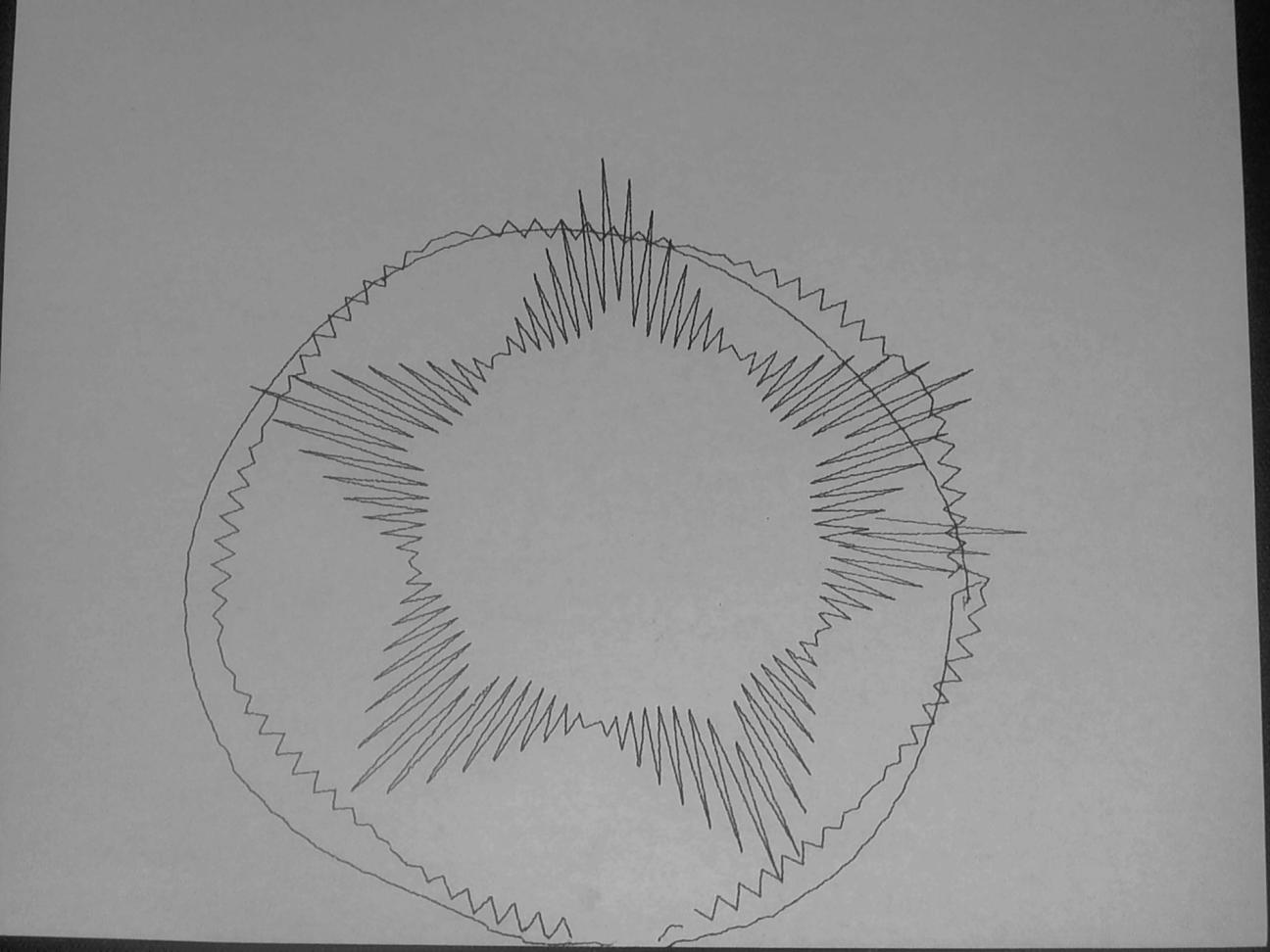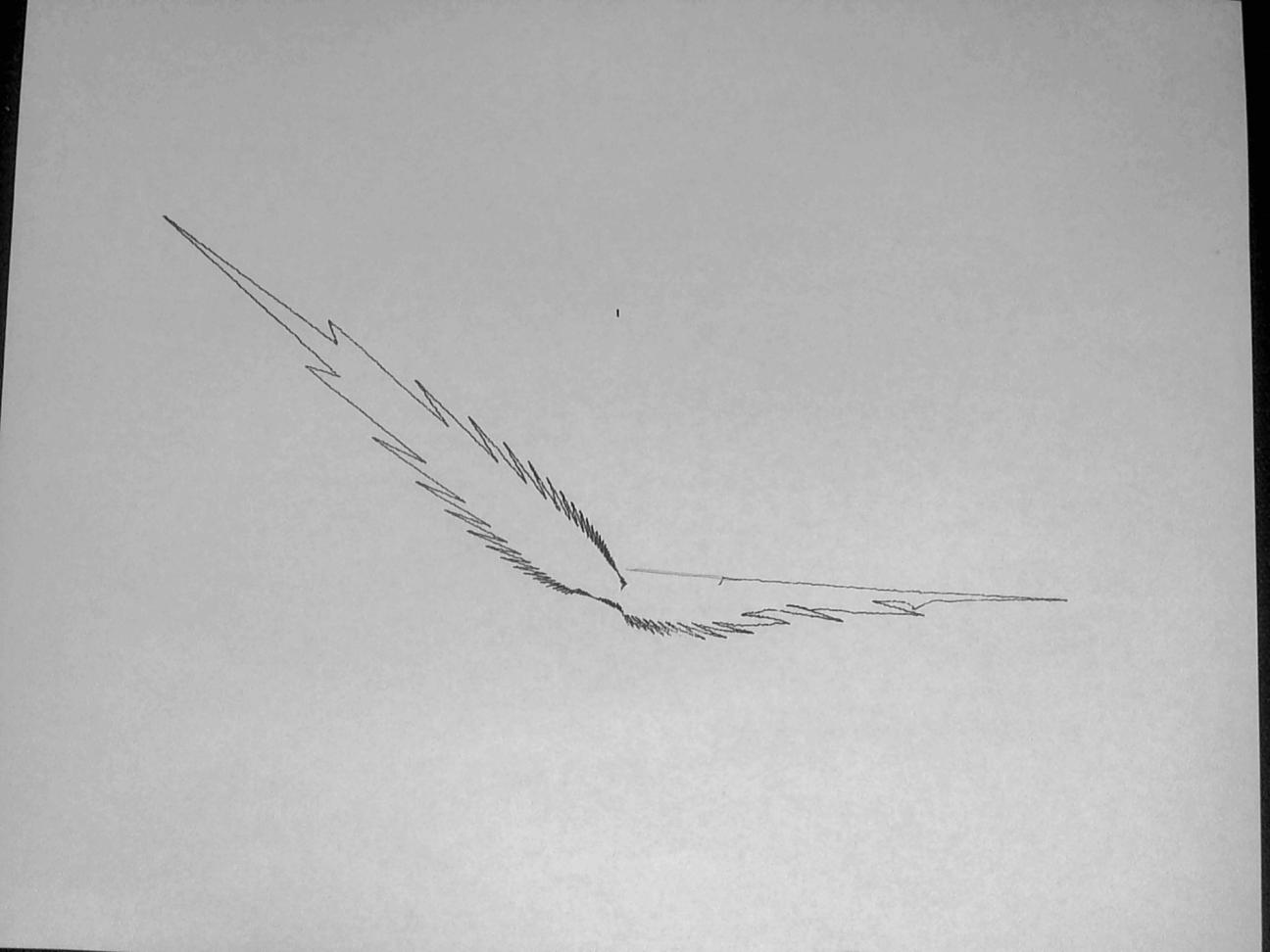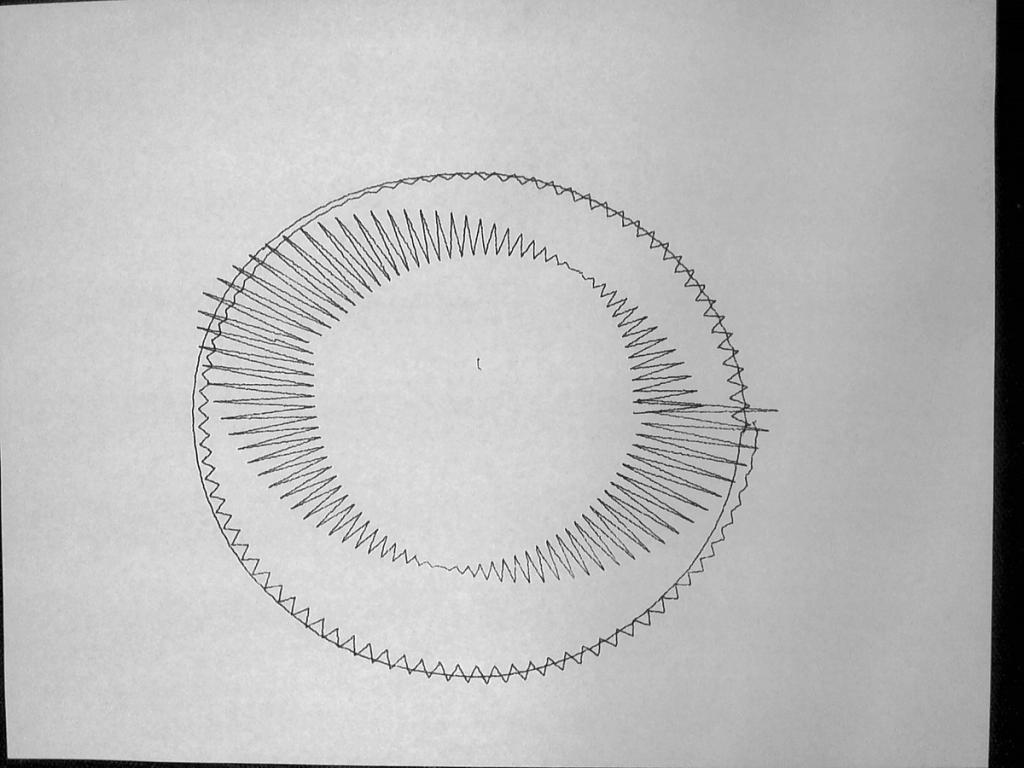
“Superformula” print series using DIY wall plotter
Earlier in 2012, as an undergraduate student, I built a crude DIY wall plotter based on Alex Weber's Der Kritzler project. It was finicky and imprecise, but it worked well enough to produce a series of simple line drawings from code.
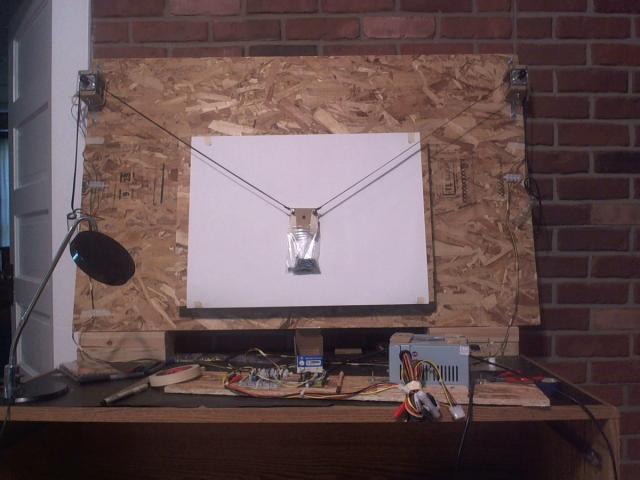
Code
I had recently learned about the superformula equation, which mixes multiple sine waves across multiple axes to create mostly round shapes with organic-looking features and symmetry. The equation uses multiple variables that all contribute to the rendered drawing, which can make it hard to intentionally craft interesting shapes.
Using Processing I built a script that generates entire batches of renderings with randomized variables, allowing me to curate shapes that interested me much quicker. The script is able to export drawings as SVG files, which are easier to translate into machine commands for the wall plotter.


